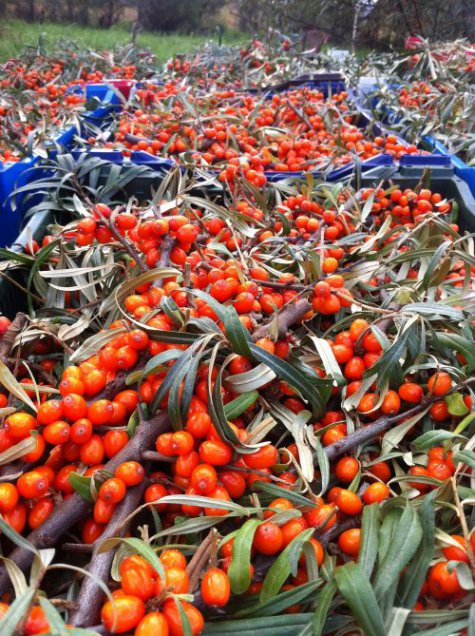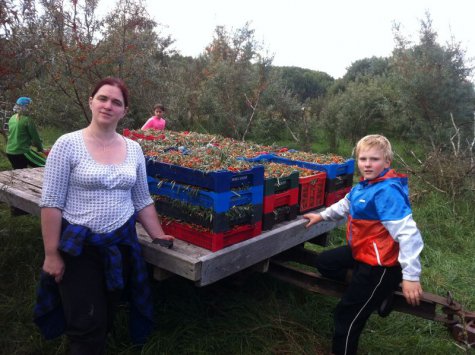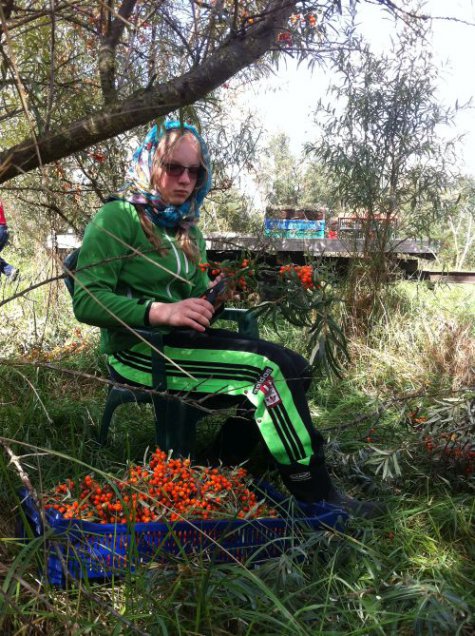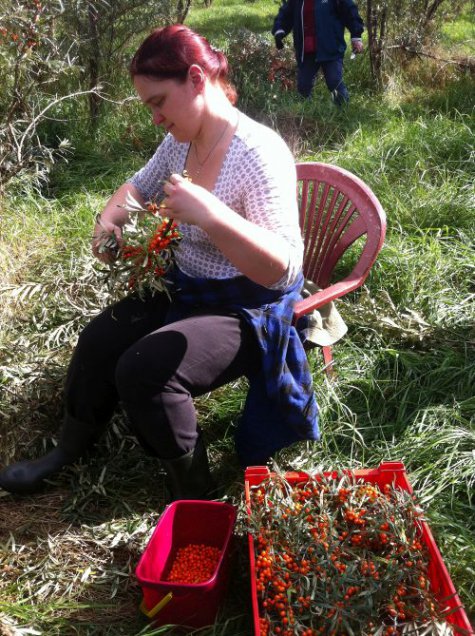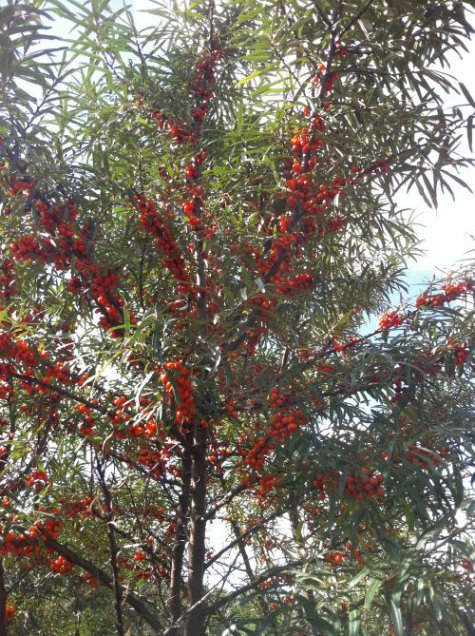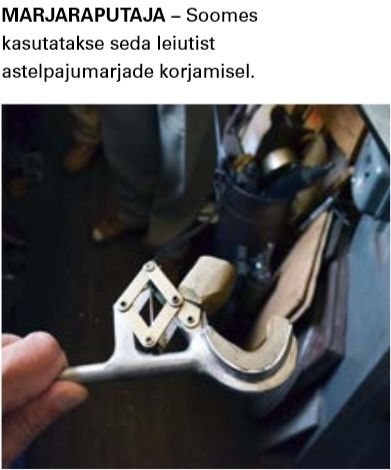New Cameras
Sea buckthorn
Text and photos Kristel Vilbaste
Translation Liis
It is quite human that we suddenly discover that we should be stocking up winter goods when weather is turning cold. Maybe it is a primeval instinct that some stores should be there – I don’t know. Today we should be able to rely on bellyfuls to be had from the shop counters but most Estonians feel that some stockpile of berries should be in the house.
As always summer was used up on the beach and for travelling in the world and the deep freeze is ratrher empty. So we start to visit farmhouse sales, fairs and good friends.
And I am no exception in this. Raspberries and strawberries got into the freezer in summer, but the berry-bearing age of the blackcurrants has not arrived yet and buying in the market in summer was forgotten.
There was a good amount of chanterelles and the cherry plums were made into a drink concoction. The cranberry pile added a sense of security. But there is still something missing.
In our family sea buckthorn has had an vital role. This is the berry that I search for each autumn. The 10 year old shrubs planted by myself were left in Vilusi, my previous home. The new shrubs had their first berries this year but passing crows at once devoured them.
My first meeting with sea buckthorns was in the middle of the deepest Soviet period. In our fridge then was a mysterious bottle of “oblepihha” – mother told that in her life there was a period when her health went so bad that she had a disease similar to leukaemia that the doctors did not understand how to cure.
But then, at a cranberry conference, a Russian scientist said that he would send her sea buckthorn oil. And the mysterious bottle arrived and when taking the medicine ended mother was cured of the illness. Since then the name of the magic brew for me has always been “oblepihha (oлепиха)”, the Russian word for sea buckthorn.
About 20 years ago many friends started to grow sea buckthorn.
To start with it seemed to be a profitable business. But when there was nowhere to sell the berries to, the bubble burst. Evidently selling sea buckthorn cuttings was the most profitable part.
But I have understood over the years that the people who established the plantations and buried much money in them still got a gift to last them for years.
A gift of health for themselves and their friends and relatives.
Ten years ago when my mate Mikk’s aged mother was involved in a car crash and broke her hip bone the doctors did not offer much hope for the bones growing together again.
But with 10 kilos of sea buckthorn berries, a gift from Sünteri Sass, the fracture did heal so that she could move for many years more.
The exciting sea buckthorn drinks and recipe suggestions from Sass has healed our family from colds, and fractures too. I cannot say what the miraculous power of this berry is, but it is effective. So effective that we brought the first plants from the garden of Sass to our own garden.
Curiously enough, although we were well updated on the state of his sea buckthorn plantation, having been to the farm close to it, I have not been in this or any other real sea buckthorn plantation until this autumn.
But this autumn it happened. Maybe the fantastic clear blue sky and more than 20 degrees warm autumn weather played their parts but I am still enchanted by this plantation.
Having walked along tractor tracks across a field into a grove with silvery grey trees my mouth dropped open. Trees filled with golden yellow, orange and reddish berries, each variety with its own colour. Tiina Sünter with all her family and friends were happily filling plastic trays with cut branches full of berries.
It seemed that all who were there that day had been coming to help for years and knew their tasks.
True, it is not at all an easy work and I don’t believe that for the payment at present, which may be about half a euro for a kilo of berries, any office persons will be prepared to change their occupation. I am the more amazed that people grumble that the berries are so expensive in shops.
I had already heard earlier from growers that there is no point in growing any plant variety that requires much manual work. In Germany it is said that it is no longer possible to find workers for eco plantations, there are simply none, and maybe due to that the Germans have been so forthcoming about migrants: trying to find a solution to their demand for eco products – things produced manually are more work-consuming by orders of magnitude but at the same time nobody is any longer willing to pay this price.
Sea buckthorn cannot be picked by machine. The time needed for doing it manually is inordinate and it hurts the hands terribly – in addition to the long thorns the skin is attacked by the rather acid juice. Gloves cannot be used because the thorns would tear them.
So it has been discovered that the simplest way is to cut off a certain amount of the branches, cut them into short sections, put them in the deep freeze and then shake off the berries. But it is a double operation and increases the labour cost.
Mikk and I tried to pick manually; good advice was given by Tiina’s mother who had been doing this work for years and is a former teacher. You avoid being pricked by the thorns if you pick the berries from the trunk towards the branch tips, the thorns then lie flat against the branch like a hedgehog’s spines. And it is worthwhile to pick the bigger, more sparsely placed berries, it is easier to pry them loose.
True, between us we managed only to pick five kilos of berries in three hours. More than berries we got good ideas and advice about everything up to washing clothes. It seems that this kind of berry-picking collective work is the best community joiner; this is a value by itself now that you see each other mostly through Facebook.
But the time together also inspired the idea to create community plantations where everybody might have some ten trees which you go to harvest in the autumn on a collective picking day – where in addition to the harvest you would meet friends, hear about their doings, where children could play with each other.
And there could be sea buckthorn, strawberry, apple, black currant as well as carrot plantation shares. General care work would be simpler to undertake there and the harvest events more exciting.
Reply: From Researchers’ Night 2015, TÖF 2015:
"Hando Kruuv – Tartu’s da Vinci".
From an article in "Inseneeria" 9/2013
The berry shaker sells well to Finland – Hando Kruuv has made quite many of them already on order. A couple were on the working table as bits and pieces. The Finns pick sea buckthorn berries with them but other berry bushes can be shaken too. The device consists of a little paw that grips the tip of a long branch, and a shaker which starts to vibrate the branch with a given frequency so that the berries fall down. A simple but ingenious device.
„The Chinese were here once too to take a look”, Kruuv said and added that he does not know if they copied it too for production in China. At least in Tartu they said that this thing was not needed since they did not have sea buckthorns in China.







